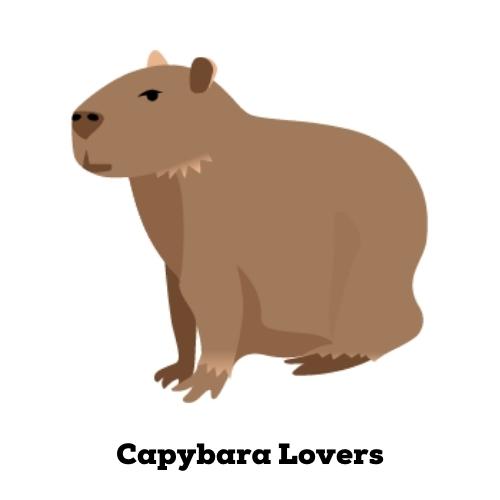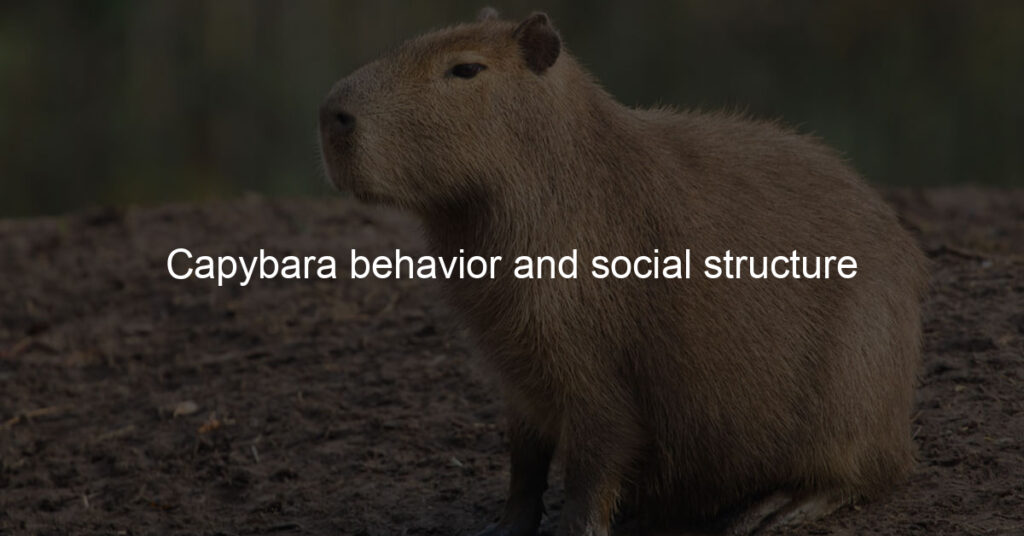If you love animals, the capybara is an incredibly interesting one to learn about! The largest living rodent in the world, they are native to South America and can often be found near bodies of water. But looking beyond their outwardly peculiar appearance, what we may not realize is that the capybara has a very complex social structure and behavioral patterns.
In this blog post, we’ll delve into some aspects of their behavior, so read on for more information about these fascinating creatures!
What are the behavioral adaptations of a capybara?
Capybaras are South American rodents, and their behavior is one of their most interesting aspects of them. These animals live in family groups and have adapted to foraging and burrowing together – when it’s time to hide from predators, they’ll work together with up to 20 other members.
Not only that, their social skills are well-developed! Capybaras can recognize their names and join each other in singing cries of joy or alarm. To protect themselves further, capybaras will even establish dominance in their group by the means of chin rubbing and teeth grinding. These phenomenal rodents make great use of the behavioral adaptations nature has given them.
What are some structural adaptations of a capybara?
Among the largest of rodents, the capybara boasts some remarkable adaptations for its aquatic habitat. Its eyes and nostrils are placed on top of its head, allowing it to stay mostly submerged while still being able to see and breathe. It also has webbed feet that enable a powerful swimming stroke and full-body hydrodynamic fur to reduce buoyancy.
An incredible muscular organ called a palate allows it to close off the back of its throat while underwater so that it can remain submerged without any water entering the nasal passages.
Finally, its sticky skin enables it to climb easily in and out of the water and rather impressively, the capybara can hold its breath for up to five minutes! With all these adaptations, this curious creature is certainly one of nature’s most fascinating inhabitants.
What is the attitude of a capybara?
The attitude of a capybara can be contagious. Known to be the world’s largest rodents, these loveable creatures possess a mellow, fun-loving disposition and they rarely become aggressive or stressed out, even when in captivity. Whether they’re playing with their friends in the wild or enjoying scratches from their caretaker, these gentle giants always remain unruffled and seemingly content.
Life is an adventure for these guys as every day brings new opportunities for exploration and relaxation – no matter what lies ahead, capybaras always keep an upbeat attitude!
How do capybaras defend themselves?
Capybaras are gentle giants, but that doesn’t mean they don’t have any defense mechanisms! These rodents are semi-aquatic and their most common strategy for defense is their ability to flee into the water. If chased onto land, capybaras can also squat low resting on their stomachs, making themselves hard to grab hold of.
They have razor-sharp incisor teeth that they use to protect against predators. If these animals find themselves cornered or under attack, they will scream a high-pitched alarm call warning other capybaras in the area of the danger. They will even bite and chase off intruders if necessary!
Are capybaras friendly to people?
Capybaras may look like giant guinea pigs, but these creatures are incredibly friendly toward people. In their native habitats, they often come up to people looking for all kinds of affection. Petting them can be a unique experience and they take treats from gentle hands with pleasure.
That being said, capybaras should be treated with respect; an animal that’s one-third of your size can still get injured if mishandled or frightened. The key to having a good time with a capybara is the same with all animals: give them space until they feel comfortable around you, and everything else will fall into place!
Do capybaras feel emotion?
It’s no secret that capybaras are undeniably quirky mammals, primarily due to their impressive size and amusing appearance. But do they feel emotion? While the answer is not a definitive yes or no, some experts believe that animals experience something akin to emotion.
For example, capybaras have been observed playing games with their owners, seeming to show strong affection for one another in their groups, and even showing sadness when separated from a companion.
Additionally, based on studies done on captive animals, it is assumed that the way that these creatures interact with each other and display behaviors related to pleasure and joy points to them being capable of feeling emotions. Meanwhile, there is still much research to be done in this area so ultimately only time will tell what discoveries we can make about our lovable capybara companions.
Concluding Remarks
All in all, understanding the behavior and social structure of capybaras means understanding their natural environment and how they interact with it. From a behavioral perspective, we can understand how fascinating these animals truly are – their cooperative nature, social behaviors, and communication styles. By appreciating these aspects of the capybara, we can also appreciate how incredible their evolution has been over time.
Research into the world of capybaras is not only providing insight into our own human evolution but is also reminding us about the need to protect such wildlife so that future generations will be able to enjoy them for years to come. So the next time you’re near water or out on a walk in South America, keep an eye out for these unique creatures—you might just be lucky enough to get a glimpse into their remarkable lives!














